Today’s Current Affairs: 20th May 2023 for UPSC IAS exams, State PSC exams, SSC CGL, State SSC, RRB, Railways, Banking Exam & IBPS, etc
Table of Contents
S-8OFP : New Air-Launched Rocket
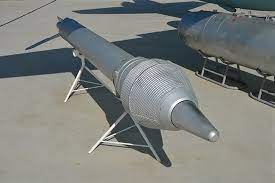
Russian forces will soon be armed with a new air-launched rocket with the S-8OFP entering production
- S-80FP is an 80mm unguided rocket developed primarily for the Armed Forces of the Russian Federation.
- It is an air-to-surface rocket intended for both fixed- and rotary-wing aircraft.
- It was designed by Splav Corporation, Russia.
- It is designed to hit sole and multiple targets, unarmored and lightly-armored military hardware, as well as surface ships.
- The S-80FP can detonate before hitting the target, on impact or after penetrating the target.
- It has a total weight of 17 kg and its warhead of 9.5 kg.
Himalayan Chandra Telescope:
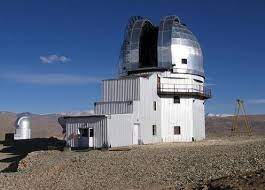
The Himalayan Chandra Telescope in Hanle recently joined hands with 10 other global observatories to observe the brightening of a blazar, one of the most powerful objects in the universe.
- Blazer is a type of galaxy that is powered by a humongous black hole and is among one of the brightest and most powerful objects in the universe.
- They are known for emitting highly energetic particles and radiation, including gamma rays, X-rays, and radio waves.
- Himalayan Chandra Telescope is a 2 meter optical-infrared telescope named after Nobel laureate Subramaniam Chandrasekhar.
- It is at the Indian Astronomical Observatory (IAO) in Hanle near Leh in Ladakh.
- It is currently the tenth highest optical telescope in the world, situated at an elevation of 4,500 meters.
- The telescope remotely operated using a dedicated satellite communication link from the Centre for Research & Education in Science & Technology (CREST), Indian Institute of Astrophysics (IIA), Bangalore.
- Imaging instruments include a Faint Object Spectrograph, a near infra-red and an optical CCD camera.
INS Vaghsheer:
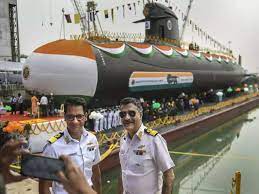
The sixth Scorpene Submarine of Project-75, Indian Navy’s Kalvari class, ‘Vaghsheer’ recently commenced her sea trials.
- INS Vagsheer (S26) is the sixth submarine of the first batch of six Kalvari-class submarines for the Indian Navy.
- It is named after the sand fish, a deadly deep-sea predator of the Indian Ocean.
- It is designed by French naval defence and energy group Naval Group and manufactured by Mazagon Dock Limited.
- It is designed to operate in all theatres of operation, showcasing interoperability with other components of a Naval Task Force.
- The Kalvari class is a class of diesel-electric attack submarines based on the Scorpène-class submarine being built for the Indian Navy.
- The submarines are designed by French naval defence and energy company DCNS and are being manufactured by Mazagon Dock Limited in Mumbai.
- It has been constructed with technology transfer from French firm Naval Groupunder a programme called Project 75.
Spitzer Telescope:

SpaceWERX, the “innovation arm” of the United States Space Force recently selected Rhea Space Activity, a Washington-based astrophysics startup, to develop the Spitzer Resurrector Mission.
- Spitzer Telescope is a S. satellite the fourth and last of the NASA fleet of “Great Observatories” satellites.
- It was the third space telescope that was dedicated to infrared imaging and was launched in 2003.
- The satellite telescope orbits the Sun about one astronomical unit (AU) in an Earth-trailing orbit.
- It studied the cosmos at infrared wavelengths.
- It spent more than 16 years gathering information on the origin, evolution, and composition of planets and smaller bodies, stars, galaxies, and the universe as a whole.
- It was named in honour of Lyman Spitzer, Jr., an American astrophysicist who in a seminal 1946 paper foresaw the power of astronomical telescopes operating in space.
Spitzer Resurrector Mission:
- It is designed to “restart” the telescope.
- The telescope is about two AU away from the Earth.
- In its current location, direct communications with Earth are not possible.
- The Mission will confirm that Spitzer has been restored to its original performance capabilities.
European Bank For Reconstruction And Development:
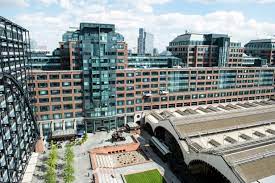
The European Bank for Reconstruction and Development (EBRD) recently pledged further support for war-torn Ukraine with plans to increase its capital by 3 billion-5 billion euros.
- European Bank for Reconstruction and Development (EBRD) is an international financial institution with the mandate to promote transition towards a sustainable, open market economy and to foster innovation.
- The EBRD was created in April 1991 to help Eastern European and ex-Soviet countries transitioning into democracies by developing free-market economies after the fall of communism.
- Headquarters: London
- It provides project financing mainly for private enterprises, usually together with other commercial lending partners, in countries that are committed to, and apply, democratic principles.
- It also works with public partners to support privatisation, restructuring and improvement of municipal services.
- It prioritizes support for countries in Central and West Asia, and North Africa.
- It focuses on advancing developmental goals in finance and policy reform.
- The organization also promotes environmentally sustainable development and gender equality and promises to be fully transparent.
- It is publicly owned by shareholders in 69 countries.
- India became the EBRD’s 69th shareholder when it joined the Bank in July 2018.
1st Ministerial Meeting Of The India-European Union Trade And Technology Council:
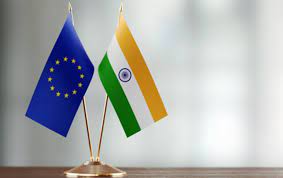
The 1st Ministerial meeting of the India-European Union Trade and Technology Council (TTC) took place, in Brussels, Belgium.
- The EU-India Trade and Technology Council is the second bilateral forum for the EU and the first one established with any partner for India. The EU and the US launched a TTC in June 2021.
- The meeting aimed to provide direction and lay the roadmap for cooperation between the two sides regarding:
- Addressing mutual market access
- WTO (World Trade Organization) reforms
- The ongoing negotiations for a Free Trade Agreement (FTA)
- Cooperation in various areas of mutual interest
- India and the EU were also working to resolve a looming issue in their trade relationship ,the E.U.’s Carbon Border Adjustment Mechanism (CBAM).
- The E.U. describes the CBAM as a “landmark tool” which places a “fair price” on carbon emitted during the production of goods that are entering the EU and a mechanism to “encourage cleaner industrial “production outside the EU.
India-EU Trade and Technology Council:
- The formation of the TTC was announced by the Indian Prime Minister and President of the European Commission in 2022 with the objective of creating a High-level coordination platform to tackle strategic challenges at the nexus of trade, trusted technology and security.
Rasht-Astara Railway:

Russia and Iran have signed a deal to build an Iranian railway line, the Rasht-Astara railway as part of an International North–South Transport Corridor (INSTC).
- The Rasht-Astara railway is seen as an important link in the corridor, intended to connect India, Iran, Russia, Azerbaijan and other countries via railways and sea – a route that Russia says can rival the Suez Canal as a major global trade route.
- Rash Astra Railway is a 162-kilometer railway that will connect the city of Rasht (Iran) near the Caspian Sea, to Astara (Azerbaijan) on the border with Azerbaijan.
- The new connection will shave four days off that traveling time frame.
- The unique North-South transport artery, of which the Rasht-Astara railway will become a part, will help to significantly diversify global traffic flows.
- Transportation along the new corridor will have significant competitive advantages and will substantially cut travel times and costs and help develop new logistics chains.
- The railway along the Caspian Sea coast would help to connect Russian ports on the Baltic Sea with Iranian ports in the Indian Ocean and the Gulf.
World Telecom Day 2023:
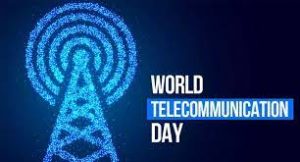
India on May 17, 2023, commemorated World Telecom Day, celebrating the advancements and achievements in the telecommunication sector.
- The Sanchar Saathi portal was launched on the day to enhance transparency, security, and accountability in the telecom industry.
- The year 2023 also marks the completion of 20 years of Universal Service Obligation Fund (USOF).
- World Telecommunication Day is celebrated annually since 1969, to mark the founding of International Telecommunication Union (ITU) and the signing of the first International Telegraph Convention in 1865.
- It aims to raise awareness of the importance of telecommunication and its contribution to social and economic development.
- The World Summit on the Information Society (WSIS) called for the declaration of May 17 as World Information Society Day.
- In 2006, the ITU combined both tents and celebrated them on May 17 as World Telecommunication and Information Society Day (WTISD).
- The theme of World Telecom Day 2023 is “Empowering the least developed countries through information and communication technologies”.
- The theme reflects the commitment of the ITU and its partners to support the least developed countries (LDCs) in harnessing the power of Information and Communications Technologies(ICT) for achieving their sustainable development goals (SDGs).
Kishtwar National Park : Snow Leopard Spotted

Snow Leopards spotted in Jammu & Kashmir’s Kishtwar National Park.
- The presence of the elusive snow leopards in Jammu and Kashmir’s Kishtwar High Altitude National Park has been confirmed by a research team of Department of Wildlife Protection through camera trap.
- Attributed as one of the seven snow leopard reserves under a project launched by Central Government, the Kishtwar High Altitude National Park lies in Doda District, about 40km north-east of Kishtwar Town.
- The park was established to conserve the snow leopard species, its prey populations and its fragile mountain habitat.
- Spread over an area of 400 sq km the park was declared a national park on 4 February 1981.
- With Rinnay River in the north, KibarNala catchment in the south, the Great Himalayas in the east and Marwa River in the west, the area lies in the Central Crystalline belt of the Great Himalayas.
- The altitude of the park ranges from 1700m to 4800m.
South Asia Gas Enterprise:

$5-billion undersea UAE-Gujarat gas pipeline proposed proposed 2,000-km-long energy corridor connecting Middle East and India, a $5 billion project, can lead to an annual saving of about `7,000 crore in comparison with similar quantity of liquefied natural gas (LNG) import.
- South Asia Gas Enterprise (SAGE), an international consortium of companies in deepwater pipeline projects, has sought the support of ministry of petroleum and others to develop an undersea gas pipeline from Gulf to India.
- The proposed 2,000-km-long energy corridor connecting Middle East and India, a $5 billion project, can lead to an annual saving of about `7,000 crore in comparison with similar quantity of liquefied natural gas (LNG) import.
- South Asia Gas Enterprise Private Limited is a Private incorporated on 21 November 2005.
- It is classified as Non-govt company and is registered at Registrar of Companies, Delhi.
- It is promoted by the New Delhi based Siddho Mal Group, in Joint Venture with a UK-based Deepwater Technology Company.
- SAGE is working with a Global Consortium of some of the most reputed companies in the field of Deepwater Pipelines, to create a Multi-Billion Dollar “Energy Corridor” that can transport gas from the Middle East to India, bypassing the land route through Pakistan.
New Chairman Of The UPSC:
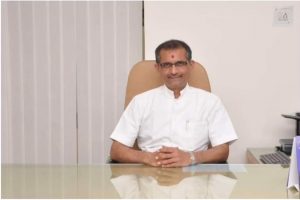
Manoj Soni took the Oath of Office and Secrecy as Chairman of the UPSC. He was already serving as the Chairman in charge since April 2022.
- The Government of India Act 1919 provided for the establishment of a Public Service Commission in India for the first time.
- The Act embodied the Montagu-Chelmsford reforms ,recommended in the report of the Secretary of State for India, Edwin Montagu, and the Viceroy, Chelmsford.
- The Royal Commission on the Superior Civil Services in India (also known as Lee Commission) in its report submitted in the year 1924, recommended that urgent establishment of the statutory Public Service Commission as envisaged by the Government of India Act, 1919.
- Subsequently the Public Service Commission was established on October 1, 1926 with Sir Ross Barker as the first Chairman of the Commission.
- It was reconstituted as Federal Public Service Commission by the Government of India Act 1935.
- With the inauguration of the Constitution of India on January 26, 1950, the Federal Public Service Commission came to be known as the Union Public Service Commission (UPSC).




